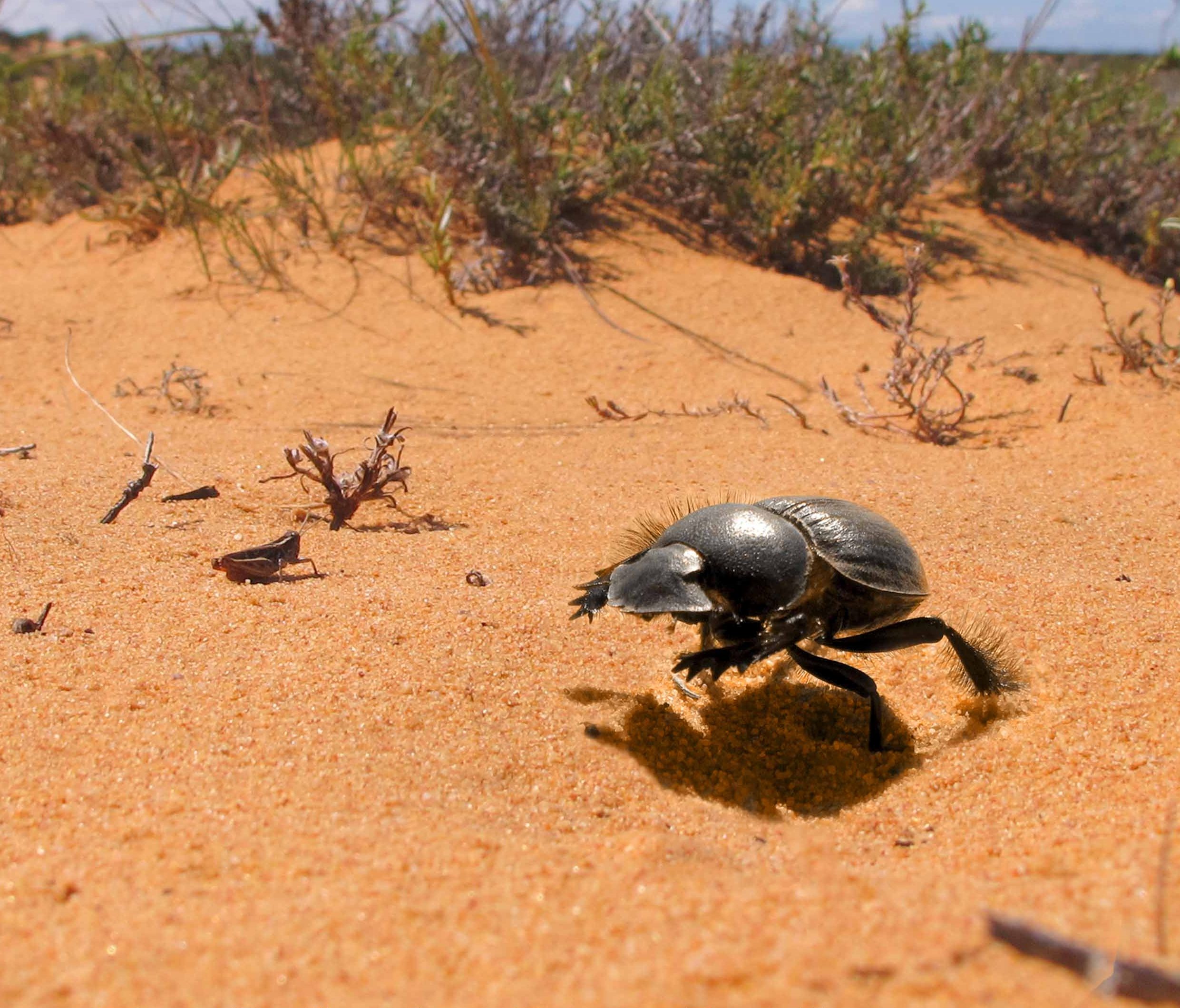
A South African dung beetle species, Pachysoma Endrodyi, is unique both for its galloping gait and for the way it collects dung. This species of Pachysoma grabs small pieces of dry dung and gallops back to a nest where it is stored; the beetle shores up the pile of dung with repeated trips back and forth. Most dung beetles make a one-way trip, grabbing wet dung, rolling it into a ball and taking it all to their nest.
"This species of Pachysoma grabs bits of poo and gallops forward with it. That is really odd. Most insects walk with a tripod gait. They plant three legs in a triangle, while swinging the other three legs forward. It’s an incredibly stable way of walking because you’ve always got three legs on the ground," Marcus Byrne of Wits University said in a statement. "For an insect to abandon the tripod gait and use its legs together in pairs like a galloping horse is really radical. The big question is: why are they doing it?"
Byrne and colleagues from Lund University in Sweden think the beetle may be counting its steps like some ant species typically do. By pacing itself, this beetle may be estimating the return distance from the food to its nest. In addition, the galloping may help the beetle avoid slipping on the softer sand. The scientists also suspect the beetle is using an eye located on the bottom of its head to measure optic flow, the pattern of apparent motion in objects, as it gallops around.
"Bees use optic flow as a measure of how fast and how far they’ve flown. Dung beetles have two eyes on each side of their head, one on top and one on the bottom, looking at the sand and we think Pachysoma might be registering optic flow with its bottom eye over the sand," Byrne said.
Source: University of the Witwatersrand
Follow LiveScience @livescience, Facebook & Google+.
Get the world’s most fascinating discoveries delivered straight to your inbox.



